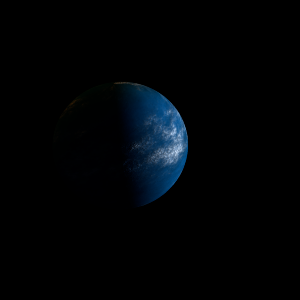|
|
Space Astro
|
Info for exoplanet "Dorabos"
| Scientific (actual) data |
|---|
| Planet | Kepler-83 d |
| Planet status | Confirmed |
| Radius | 0.173 |
| Orbital period | 5.1698 |
| Semi major axis | 0.051 |
| Discovered | 2014 |
| Updated | 2021-02-05 |
| Tconj | 2455010 |
| Impact parameter | 0.37 |
| Publication | Announced on a website |
| Detection type | Primary Transit |
| Alternate names | 2MASS J18485580+4339562 d, K00898.02, KIC 7870390 d, KOI-898 d, KOI-898.02, Kepler-83 A d, WISE J184855.80+433956.1 d |
| Star name | Kepler-83 |
| Right ascension | 282.23° |
| Declination | 43.67° |
| Mag v | 16.511 |
| Mag j | 13.737 |
| Mag h | 13.079 |
| Star distance | 405.01 |
| Star metallicity | -0.2 |
| Star mass | 0.664 |
| Star radius | 0.59 |
| Star sp type | M0 V |
| Star temperature | 4648 |
| Star alternate names | 2MASS J18485580+4339562, KIC 7870390, KOI-898, Kepler-83 A, WISE J184855.80+433956.1 |
| Wikipedia article | Kepler-83 d |
Back
| |
| Fictional info (?) |
|---|
| Suggested name | Dorabos |
| Planet type | Hot planet |
| This hot planet is named after the deity Dorabos, the god of the sea.
As seen relative to the fixed stars, it rotates on its axis exactly five times for every three revolutions it makes around Kepler-83.
The volume of water detected has been estimated to be equivalent to the volume of water in Lake Superior.
Dorabos has been explored on several occasions by robotic spacecraft, most notably during the early Pioneer and Wayfinder flyby missions and later by the Galileo orbiter. |
| Atmosphere | Formaldehyde | 97% |
| Hydrogen | 2.2% |
| Hydrogen chloride | 0.38% |
| Helium | 0.027% |
| Atmospheric pressure | 1 bar |
 |
| No known satellites |
| Google search for Dorabos |
|
Website by Joachim Michaelis
|
|
|
|